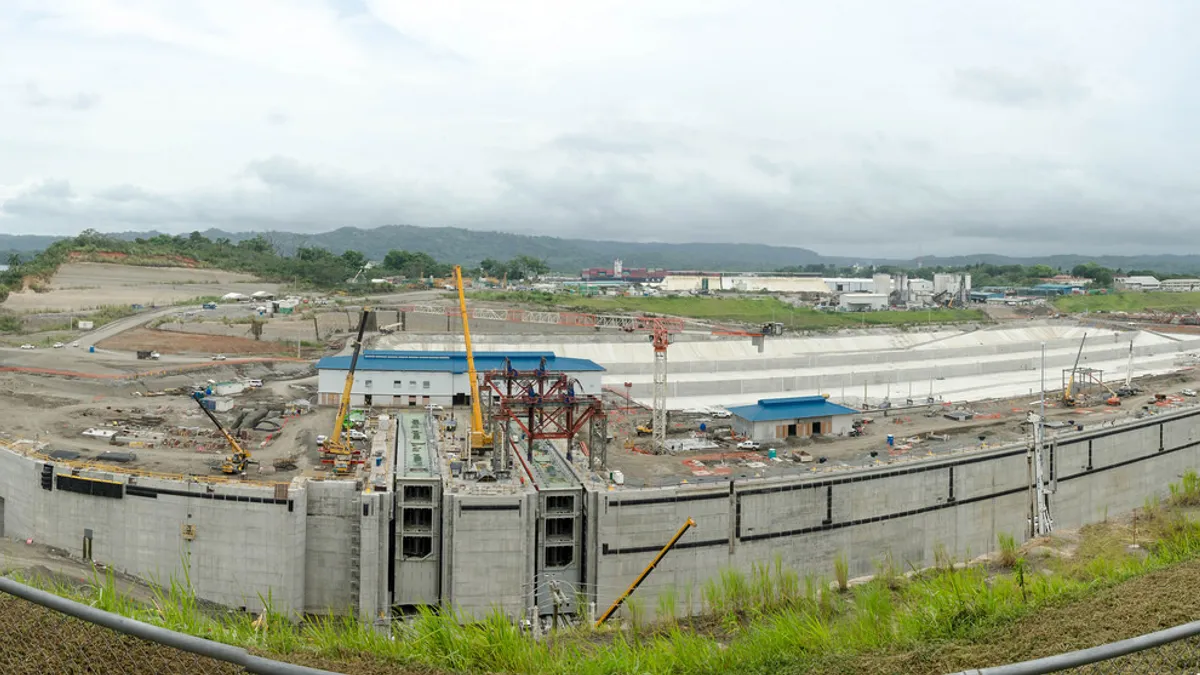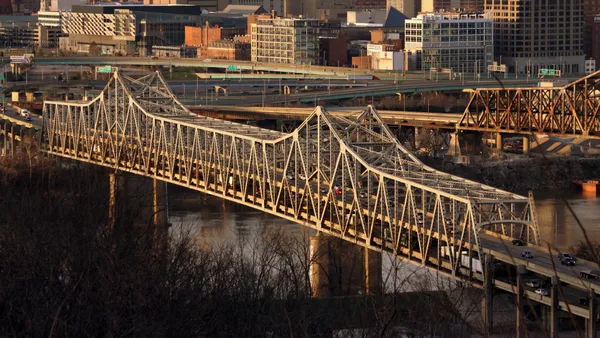Dive Brief:
- The new $5.4 billion Panama Canal expansion is scheduled to open Sunday with the ability to accommodate the newer, larger ships companies are using to survive the China-driven shipping industry downturn, The Wall Street Journal reported.
- The nine-year canal project, which took 40,000 workers to dig, boasts the addition of a third lane — which can handle jumbo 14,000-container ships, up from its current maximum of 5,000-container vessels — and a doubling of the canal's overall capacity, according to USA Today.
- The new canal's opening is expected to increase business to Eastern U.S. ports by 10% by 2020, a projected shift that has resulted in a $155 billion construction commitment on behalf of those facilities to be able to accommodate new "post-Panamax" ships.
Dive Insight
Port facilities in Norfolk, VA, Baltimore and Miami are ready for the bigger ships, but others in Charleston, SC, and Savannah, GA, are not. The behind-schedule Bayonne Bridge project is currently blocking access to three of the Port Authority of New York and New Jersey's largest port terminals, which have undergone a $6 billion overhaul according to USA Today. The Skanska USA-led joint venture announced that it would be late 2017 before the bridge is raised high enough to allow the large post-Panamax ships to safely pass. Planners originally timed the bridge's completion to the Panama Canal expansion completion, which was also delayed a few months after experiencing setbacks and delays.
According to the International Business Times, the new canal could give a boost to American energy exports of crude oil, petroleum products and liquefied natural gas (LNG). In fact, construction of five LNG export terminals is currently underway in the U.S., and four more facilities have received federal approval and are in the pipeline.
However, a New York Times investigation found that the primary contractor, Grupo Unidos por el Canal — which beat out other bidders by $1 billion — may have utilized budget cost shortcuts, which could result in an unsafe, low-quality outcome for the canal. The Times said the concrete that lines the canal locks' walls have already failed water tightness tests, even though the concrete is supposed to last at last 100 years.














